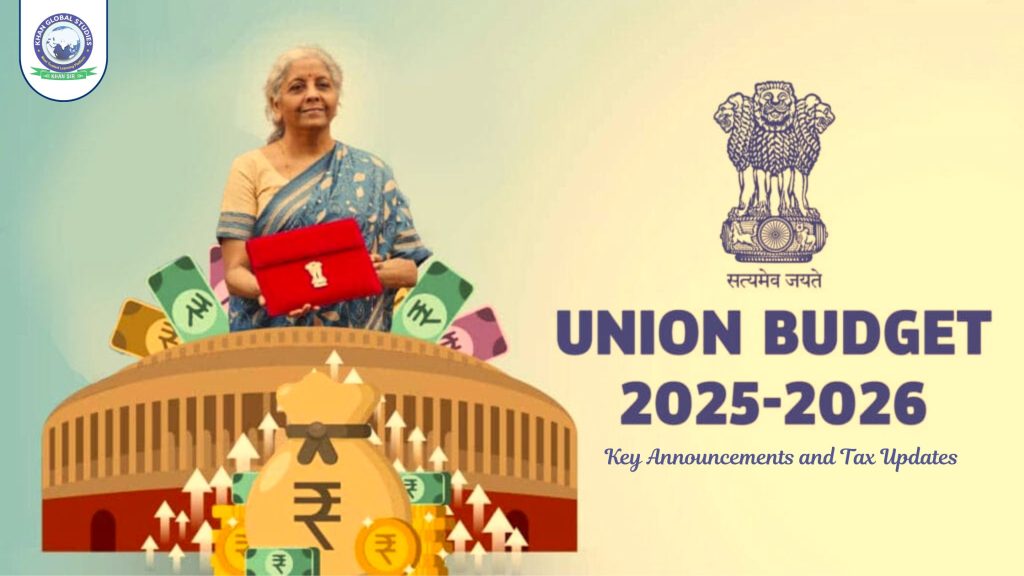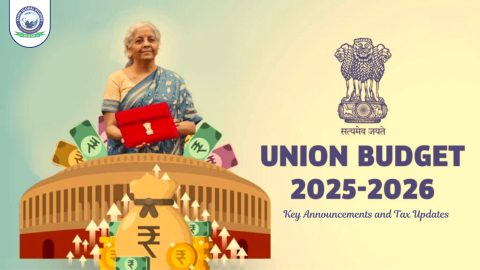The Union Budget 2025-26, presented by Finance Minister Nirmala Sitharaman, focuses on economic growth, tax benefits, infrastructure improvements, and support for key industries. This budget aims to positively shape India’s financial landscape with measures to increase disposable income, encourage investments, and boost domestic businesses. Below is an easy-to-understand summary of the major reforms, tax changes, and their impact on individuals and businesses.
Key Highlights of Union Budget 2025
1. Tax Reforms and Relief for Individuals and Businesses
One of the most awaited aspects of the budget was the changes in the income tax rules. The government has introduced several measures to reduce the tax burden:
- Increased Tax Exemption Limit: Individuals earning up to Rs 12 lakh per annum will now be exempt from income tax under the new tax system.
- Revised Tax Brackets: The tax structure has been revised to provide relief to those earning between Rs 12 lakh and Rs 24 lakh per annum.
- Higher Standard Deduction: The standard deduction limit has been raised, providing additional relief to salaried employees and pensioners.
2. Increased Investment in Infrastructure
To strengthen the economy in the long term, the government has increased capital expenditure by 10.1% for FY26.
- Transport Upgrades: A significant budget allocation has been made for highways, railways and urban transport modernisation.
- Smart Cities and Urban Development: Additional funds have been allocated to improve urban infrastructure and enhance smart cities initiatives.
- Affordable Housing: Incentives for real estate developers and homebuyers aim to make housing more accessible and affordable.
3. Support for Startups and Small Businesses
The budget has introduced tax exemptions and financial support for startups and MSMEs to boost entrepreneurship and job creation.
- Extended Tax Holiday: Startups registered before March 2027 can now avail tax holiday for an extended period.
- Simplified Compliance: New GST rules and faster refund processes will improve ease of doing business.
- Easier Access to Credit: Additional financing under the Mudra scheme will help small businesses access credit more conveniently.
4. Incentives for Second Home Ownership
- Tax Benefits on Home Loans: Home buyers investing in a second property for rental income or future value appreciation will receive new tax incentives.
- Reduced Stamp Duty: The reduction in stamp duty in select urban areas aims to stimulate the real estate market.
5. Fiscal Discipline and Economic Growth Strategies
- Fiscal Deficit Target: The government plans to reduce the fiscal deficit to 4.4% of GDP in FY26 to ensure sustainable economic management.
- Public Asset Monetisation: The plan to generate Rs 10 lakh crore by monetising public assets will fund new development projects.
- Focus on Key Sectors: Special initiatives for healthcare, education and green energy sectors will drive long-term growth.
6. Customs Duty Exemptions to Strengthen Domestic Manufacturing
To boost local production and exports, several customs duty exemptions have been introduced:
- Critical Minerals: Items such as cobalt powder, lithium-ion battery waste, lead and zinc are now exempted from basic customs duty.
- Support for the Textile Industry: Additional shuttle-less looms have been added to the list of fully exempted textile machinery to help textile manufacturers.
Impact on Middle Class
The budget introduces significant benefits for middle-class taxpayers:
- Income tax exemptions: The revised tax structure ensures higher take-home pay for salaried employees and pensioners.
- Housing incentives: New benefits for second home purchases will provide long-term financial security.
- Cost of living adjustment: Increased investment in healthcare and urban infrastructure will improve the quality of life.
New Income Tax Slabs for 2025
There is no change in tax rates under the old system, but the new tax regime has been updated as follows:
| Income Limit (INR) | Tax Rate |
| Up to Rs 4,00,000 | NIL |
| Rs 4,00,001 – 8,00,000 | 5% |
| Rs 8,00,001 – 12,00,000 | 10% |
| Rs 12,00,001 – 16,00,000 | 15% |
| Rs 16,00,001 – 20,00,000 | 20% |
| Rs 20,00,001 – 24,00,000 | 25% |
| Above Rs 24,00,000 | 30% |
Conclusion
The Union Budget 2025-26 balances economic growth with tax relief and fiscal discipline. It brings tax benefits, increased investment in infrastructure, support for startups and MSMEs, and initiatives to strengthen the manufacturing sector.
Middle-class individuals will benefit from more disposable income and homeownership incentives. Since financial planning has become essential, individuals and businesses should assess how these changes will impact their financial future.




